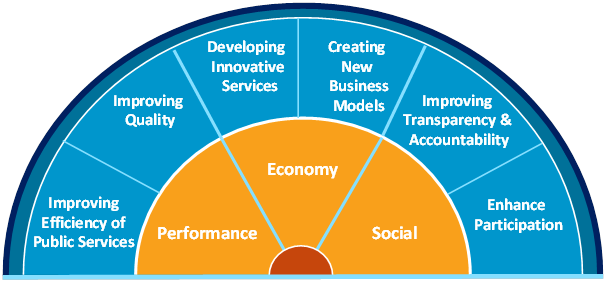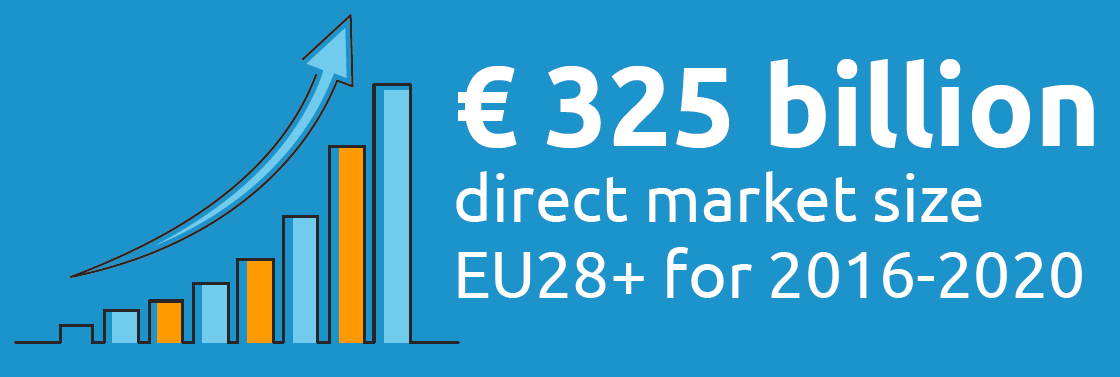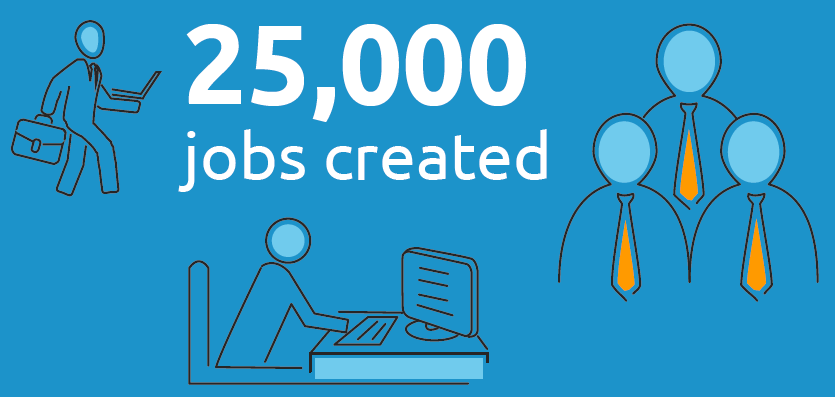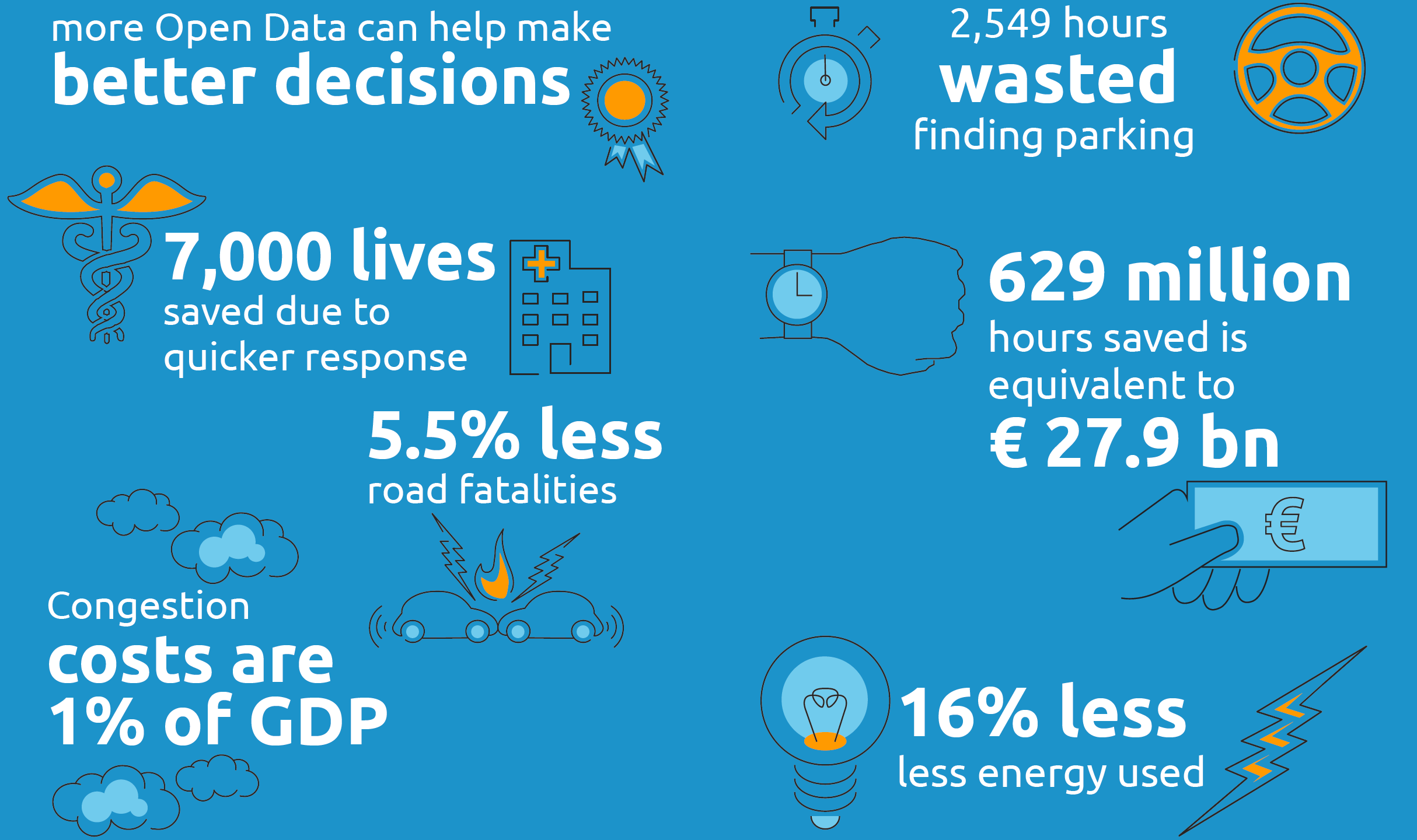data.europa.eu harvests the metadata of Public Sector Information available on public data portals across European countries. Information regarding the provision of data and the benefits of re-using data is also included.
Open (Government) Data refers to the information collected, produced or paid for by the public bodies (also referred to as Public Sector Information) and made freely available for re-use for any purpose. The licence will specify the terms of use. These principles for Open Data are described in detail in the Open Definition.
Public sector information is information held by the public sector. The Directive on the re-use of public sector information provides a common legal framework for a European market for government-held data. It is built around the key pillars of the internal market: free flow of data, transparency and fair competition. It is important to note that not all of the public sector information is Open Data.
Find out more about the PSI Directive and other non-legislative activities of DG CONNECT in this area.
Benefits of Open Data
The benefits of Open Data are diverse and range from improved efficiency of public administrations, economic growth in the private sector to wider social welfare.
Performance can be enhanced by Open Data and contribute to improving the efficiency of public services. Greater efficiency in processes and delivery of public services can be achieved thanks to cross-sector sharing of data, which can for example provide an overview of unnecessary spending.
The economy can benefit from an easier access to information, content and knowledge in turn contributing to the development of innovative services and the creation of new business models.
Social welfare can be improved as society benefits from information that is more transparent and accessible. Open Data enhances collaboration, participation and social innovation.

The economy can benefit from easier access to information, content and knowledge in turn contributing to the development of innovative services and the creation of new business models.
For 2016, the direct market size of Open Data is expected to be 55.3 bn EUR for the EU 28+. Between 2016 and 2020, the market size increases by 36.9%, to a value of 75.7 bn EUR in 2020, including inflation corrections. For the period 2016-2020, the cumulative direct market size is estimated at 325 bn EUR.


New jobs are created through the stimulation of the economy and a higher demand for personnel with the skills to work with data. In 2016, there will be 75,000 Open Data jobs within the EU 28+ private sector. By 2020, this number will increase to just under 100,000 Open Data jobs. Creating almost 25,000 new direct Open Data jobs by 2020.
Public sector performance can be enhanced by Open Data. Greater efficiency in processes and delivery of public services can be achieved thanks to cross-sector sharing of data, providing faster access to information. The accumulated cost savings for the EU28+ in 2020 are forecasted to equal 1.7 bn EUR.

Open Data results in efficiency gains as real-time data is used that enables easy access to information that improves individual decision-making. Three case studies are assess in more detail: how Open Data can save lives, how it can be used to save time and how Open Data helps achieve environmental benefits. For example, Open Data has the potential of saving 7000 lives a year by providing resuscitation earlier. Furthermore, applying Open Data in traffic can save 629 million hours of unnecessary waiting time on the roads in the EU.

A summary of the findings of the economic study on the benefits of Open Data is available here:
Checklist for using data
Important steps to go through before using the data.
Having access to data is a first step. Data is not an end in itself. Data can be used in different ways and for different purposes. Data can also be available with different licences, formats and quality.
Your purpose
Define your purpose: There are different purposes for which the use of Open Data can add value to your activities. It can provide insight into a specific topic that you want more information about or even write about (i.e. data journalism). Open Data can also add required information to an application or service, like details about schools if you are developing an application to help find the best school for yourself or your children. Businesses can also use Open Data to improve their customer profiles and are able to fit the needs of their customers better. Whether it is for private or commercial use, Open Data offers a lot of possibilities.
Identify Data labels: If you know for which purpose you need data, it is important to look whether the data fits your needs by looking at the data labels and metadata (data about the data). For example, if you want to build an application that gives advice about the best primary education in the neighbourhood, you need to check whether the data set that you would like to use includes schools that give primary education, covers the specific area you want to include and whether performance indicators are available.
Open licence
Check Openness: Take a look at the licence information provided about the data set. Make sure a licence is available which allows you to make use of the data in the way that you intend (e.g. that commercial re-use is allowed if you develop a commercial application).
Check Attribution requirements: It is possible that the licence states that people who use the data must credit whoever is publishing it, which means that you need to credit the owner when you make your product or service available. This is called attribution.
Check Share-Alike requirements: If it indicates that people who mix the data with other data have to also release the results as Open Data, you are obliged to publish your own data under a similar licence after adding other data to the original source. This is called share-alike. Make sure that the licence is in line with your purpose for using the data.
In the absence of a licence, there is no information about the terms and conditions applicable! You may want to contact the owner of the data to check what uses are allowed
File format
After you have decided that a specific data set is exactly what you are looking for, you are probably able to choose to download the datasets in different file formats. Depending on your computer skills, you can choose the file type that is most appropriate. The most common file format for tabular data is ‘.csv’. It allows you to add other information to the file or make calculations with the data. Datasets that can be adjusted are published using an open file format. Most datasets are available in an open file format, but bear in mind that some formats (e.g. ‘.pdf’) are not changeable.
Data Quality
On the page where you want to download the data set, you should find information about the last date the file was modified. If you require data for a specific period of time, you need to check whether information about the time period is provided or it has been updated recently. You should check whether the information you were expecting to find in the file is actually included and you understand the different labels.
Here is a short checklist developed by the Open Data Institute:
Form
- how has the data been processed?
- is it in raw or summary form?
- how will its form affect your analysis/product/application?
- what syntactic (language) and semantic (meaning) transformations will you need to make?
- is this compatible with other datasets you have?
Quality
- how current is the data?
- how regularly is it updated?
- do you understand all the fields and their context?
- for how long will it be published?
- what is the commitment by the publisher?
- what do you know about the accuracy of the data?
- how are missing data handled?
Look around at data.europa.eu and discover how it fits your data needs.
